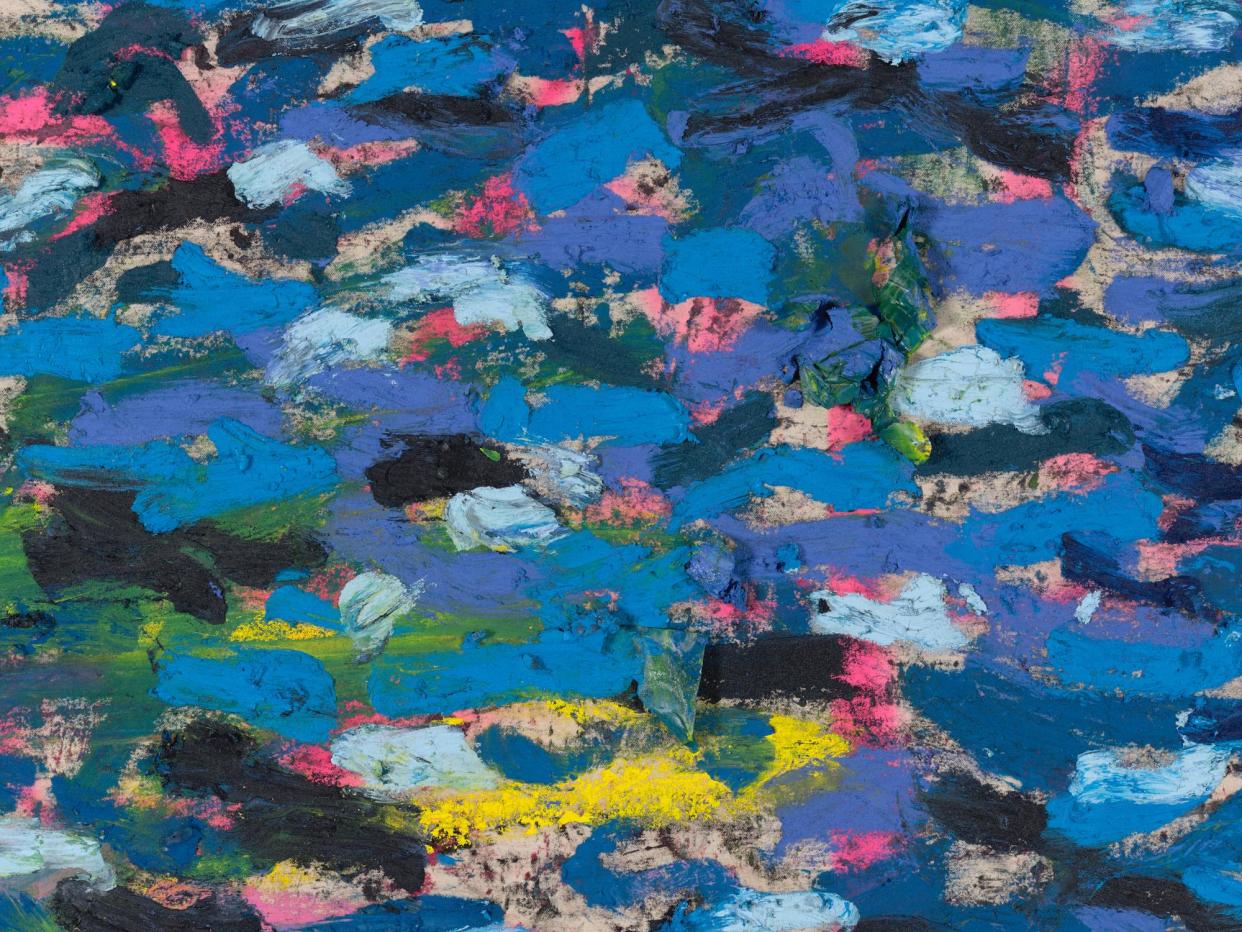Modernist Paris, a Monet adventure park and the death of life drawing – the week in art

Exhibition of the week
The Flooded Garden
An art adventure playground for all ages, inspired by Monet’s water lily garden and conceived by painter Oscar Murillo.
• Tate Modern, London, until 26 August
Also showing
Oscar Murillo
Parallel to his summer extravaganza at Tate Modern, Murillo is showing his paintings in the Regency treasure that is Burlington Arcade.
• Burlington Arcade, London, from 25 July until 24 August
Paris 1924
A look at the brilliant modernist cultural world of Paris when it last staged the Olympics 100 years ago.
• Fitzwilliam Museum, Cambridge, from 19 July until 3 November
Goshka Macuga
An installation that explores archaeology and London’s past, from ancient Roman Londinium to modern times.
• London Mithraeum Bloomberg Space until 18 January
The ‘Death’ of the Life Room
Life drawings by artists including David Hockney and Edward Burne-Jones feature in this exhibition about changing attitudes to art education.
• Whitworth Art Gallery, Manchester, until 12 January
Image of the week
The National Galleries of Scotland in Edinburgh has taken possession of one of the loveliest works of the women who worked alongside the men at the Glasgow School of Art in the final years of the 19th century. Bessie MacNicol’s The Lilac Sunbonnet is a light-drenched, joy-filled painting of a girl in the countryside; its deft brushstrokes perfectly capture the dappled rays of sun. Indeed, the work is infused with all that was best in the movement that ushered Scottish painting into the modernist era. It’s now clear that many of the Glasgow Girls were at least as good as the Boys, and some of them were even better. Read the full story here.
What we learned
A hidden self-portrait by Norman Cornish was found on the back of another painting
Bill Viola, ‘the Rembrandt of the video age’, died aged 73
Donald Trump’s defiance created a picture that echoes works of frontier heroism
Sculptor Hany Armanious said his casts of discarded items are about redeeming waste
Paris is aiming to deliver the leanest, greenest Olympics yet
Creators of a new Tate Modern show said artists should exploit AI’s capabilities
Prints of the felled Sycamore Gap tree are to go on display
Jamaican-born sculptor Ronald Moody’s work exudes humanity
Dover Castle will ‘rise from ashes of the 1216 siege’ in a digital exhibition
Masterpiece of the week
Poplars on the Epte by Claude Monet, 1891
The delirium of reflections that makes Monet’s paintings of his water lily pond so endlessly absorbing is already evident in this painting from the year after he moved to Giverny, where he created the garden he would spend his late years painting. Here, he wonders at the mirror-like surface of a river in whose glistening ripples you can see an inverted world. Painting from a boat, Monet gets close to that upside down illusion and gives it equal attention with the “reality” above: the painting is roughly divided in two along the riverbank, into the material world and its watery shadow. Monet depicts the trees, clouds and blue sky both as they look the right way up and as they appear replicated on the shimmering river. The artist who was called “only an eye” by Cézanne shows here that he has a profound, poetic mind.
• Scottish National Gallery, Edinburgh
Don’t forget
To follow us on X (Twitter): @GdnArtandDesign.
Sign up to the Art Weekly newsletter
If you don’t already receive our regular roundup of art and design news via email, please sign up here.
Get in Touch
If you have any questions or comments about any of our newsletters please email newsletters@theguardian.com


